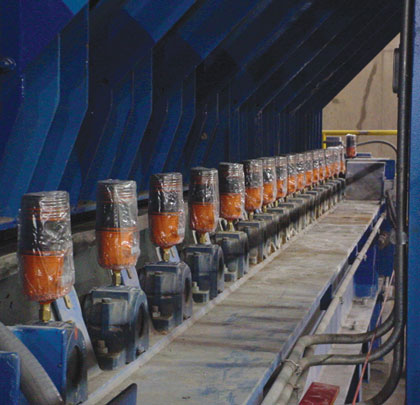When it comes to bearings, grease is often the lubricant of choice. However, over or under-greasing can cause overheating, lubricant deterioration, and eventual bearing wear or failure. To help ensure proper lubrication, the Pulsarlube automatic lubricant dispensing system can be used to manage a precise amount of grease applied to specific lubrication points.
SINGLE POINT AUTOMATIC LUBRICATORS
Pulsarlube single point automatic lubricators, which are used in a variety of applications such as lubrication of bearings, fans, chains, electric motors, slides and guide-ways, are among the types of automated grease dispensing systems available in today’s industry. They help reduce operating costs and maximize equipment life by providing a precise and controlled supply of lubricant to lubrication points. The Pulsarlube product reduces downtime caused by inadequate bearing lubrication, thus contributing to the uninterrupted operation of plant equipment and improved productivity and profitability.
As part of an overall lubrication program, automatic lubricators play a key role because without them, it is difficult to implement an easy and cost-effective maintenance plan. Without a maintenance schedule in place at your plant, problems can arise from:
- Personnel avoiding hard-to-reach or dangerous places
- Shutting down equipment to safely access bearings
- Mixing incompatible greases
- Adding too much or too little grease.

Condition of bearing before trial
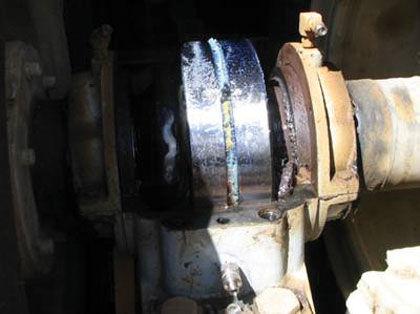
Condition of bearing after trial
FOUR HISTORICAL LUBRICATION METHODS
Prior to the introduction of automatic lubrication devices, it was necessary to shut down some machinery in order to lubricate it. Today, however, automatic lubrication devices reduce this downtime. Single point automatic lubricators are an important element of a lubrication program and help improve grease-related maintenance practices by replacing manual greasing and, in some cases, more costly central lubrication systems. Because of this, automatic lubricators can be an inexpensive way to maximize a plant’s maintenance resources.
Historically, there have been four key lubrication methods used in a manufacturing environment:
- Run to failure, which is the operation of machines until breakdown. Equipment is subsequently torn down, repaired, lubricated and then rebuilt. This method is costly and inefficient. Not surprisingly, this operation cycle was more common in the past then it is today.
- Oil bath and splash, which is either the submergence of all system gears and bearings in an oil sump or the splashing of components with rotating gears. This enclosed system is cost effective in the short term. However, contaminants that may get trapped inside the system will decrease the life of the oil and ultimately cause increased maintenance costs.
- Central lubrication systems, which store lubricant in a reservoir and then continuously pump it to critical equipment components through a complicated system. Although these systems are important for some particular manufacturing purposes, they are not effective for most applications. Central lubrication systems are also expensive to assemble and install.
- Single point automatic lubricators, like those manufactured by Pulsarlube, which are designed to dispense lubricant consistently and precisely through a powerful positive displacement pump for up to one to two years depending on the application. It also has the capacity to lubricate up to 8 lube points at a maximum of 20 feet (6.1 meters) per point, this in turn allows for the lubrication of hard to reach/hazardous areas. The Pulsarlube product is a simple, accurate, and cost-effective method for most applications.
Originally, automatic lubricators simply enabled a facility to operate machinery and lubricate bearings simultaneously. Today, single point automatic lubricators are widely accepted in the modern manufacturing world and have an expanded role to improve overall maintenance practices, reduce costs, increase efficiency, and promote plant safety.
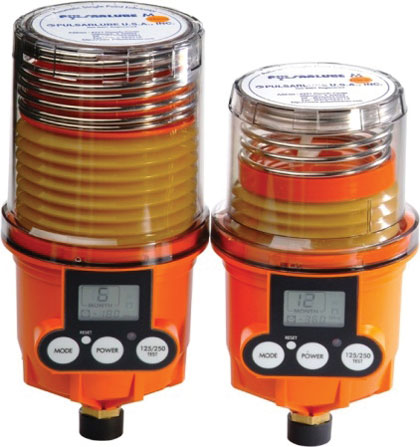
M250 and M125 Pulsarlube automatic lubricators
RESISTANCE TO CHANGE
Even though there is value in implementing automatic lubricators, there is still some resistance in manufacturing circles due to the initial investment required. Ultimately, lubrication related bearing wear and equipment failure will be a much larger expense. Companies that invest in automatic lubricators to improve preventative maintenance will benefit financially in the long term.
Some companies prefer to stick with “tried and true” lubrication methods and often times prefer manual application of the lubricant. This method requires maintenance personnel to monitor the plant, interact with the machinery through the use of grease guns and other manual lubricators and document the procedure in a report. In these cases, companies may be uncomfortable relinquishing a human’s responsibility to a mechanical device.
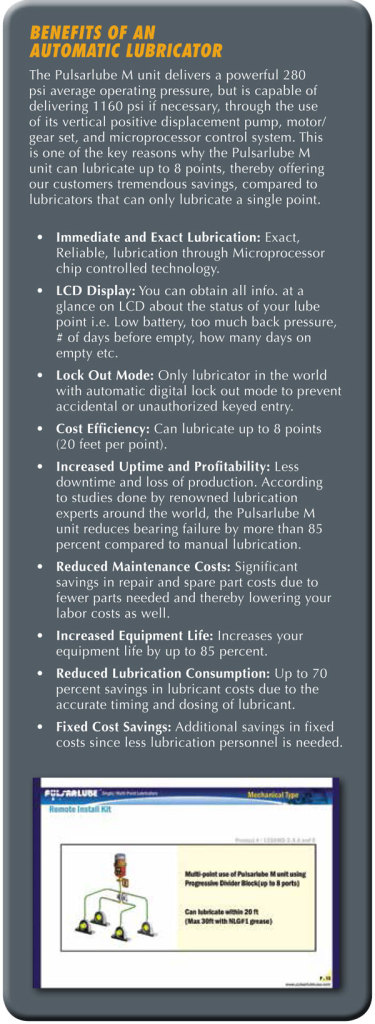
RELIABILITY IN CRITICAL APPLICATIONS
If a plant is concerned about the reliability of automatic lubricators, we encourage them to test our lubricating device in less critical applications. Plants can easily conduct a phase progression on equipment that is probably not being lubricated regularly and has perhaps failed, such as fan bearings on a roof, or pump bearings in a basement. This machinery may not be as critical to the plant’s production line as other pieces of equipment. Due to the difficulty in accessing these bearings, they may have gone an extended period of time without proper lubrication. A plant will gain a better understanding of the Pulsarlube automatic lubricator’s reliability and role in proper grease application through initial testing in less critical areas.
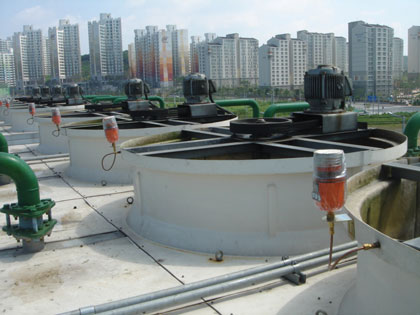
Pulsarlube M250 on cooling towers
As part of a lubrication management program, the Pulsarlube automatic lubricator can help a plant ensure that its machinery is receiving proper lubrication, in the right place, at the right time, and in the correct amount. This helps plant efficiency by minimizing the amount of grease being used and maximizing maintenance resource time. Instead of assigning staff with the preventive maintenance task of greasing bearings, the plant can benefit through more active involvement with predictive maintenance work such as oil analysis, thermography, and vibration analysis.
SUMMARY
The innovative Pulsarlube automatic single point lubricator can be an important component to a successful lubrication program. It is a cost effective way to reduce bearing failure, minimize equipment downtime and contribute to a plant’s continuous operational success. ■
About the Author
Bill Zavala is vice-president of international sales for Pulsarlube USA, Inc. He can be reached at bill@pulsarlube.com. For additional information, visit www.pulsarlubeusa.com.
MODERN PUMPING TODAY, October 2014
Did you enjoy this article?
Subscribe to the FREE Digital Edition of Modern Pumping Today Magazine!


